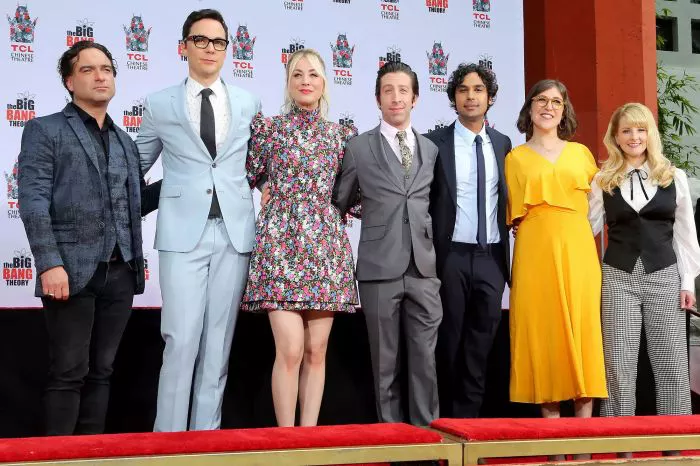Rajesh Koothrappali, affectionately known as Raj, is a central character in the hit television series “The Big Bang Theory.” Throughout the show’s 12 seasons, Raj captivated audiences with his endearing personality, witty humor, and struggles with social anxiety. Raj’s inability to speak to women without the aid of alcohol became a recurring theme, leading many viewers to wonder about the nature of his disorder. In this exploration, we’ll delve into Raj’s character, examining the symptoms and implications of his social anxiety disorder and its portrayal in the context of the show.
The Symptoms of Social Anxiety Disorder
Social anxiety disorder, also known as social phobia, is a common mental health condition characterized by intense fear and anxiety in social situations. Individuals with social anxiety disorder often experience excessive self-consciousness, fear of judgment or humiliation, and avoidance of social situations that trigger their anxiety. Symptoms may vary in severity and can significantly impact a person’s daily life, relationships, and overall well-being.
For Raj, his social anxiety manifests primarily in his inability to speak to women without the aid of alcohol. He experiences intense fear and discomfort in social settings, particularly around attractive women, leading him to resort to alcohol as a coping mechanism. This reliance on alcohol to overcome his anxiety reflects a common behavior among individuals with social anxiety disorder, who may use substances as a way to self-medicate and alleviate their symptoms temporarily.
Portrayal of Social Anxiety in ‘The Big Bang Theory’
“The Big Bang Theory” portrays Raj’s social anxiety with sensitivity and humor, capturing the challenges and complexities of living with the disorder. Raj’s struggles are depicted with empathy and understanding, allowing viewers to empathize with his character while also finding humor in his awkward interactions and misadventures. The show balances the seriousness of social anxiety with lighthearted comedy, creating a nuanced portrayal of the disorder that resonates with audiences.
Throughout the series, Raj’s social anxiety is a recurring theme that shapes his character arc and interactions with others. His inability to speak to women without alcohol leads to numerous comedic situations and misunderstandings, while also highlighting the impact of his disorder on his personal and professional life. Despite his challenges, Raj’s friendships with characters like Howard, Leonard, and Sheldon provide him with a support network and a sense of belonging, offering viewers a glimpse of hope and resilience amidst his struggles.
The Intersection of Culture and Mental Health
As an Indian immigrant living in the United States, Raj’s experiences with social anxiety are also influenced by cultural factors and expectations. South Asian cultures often place a strong emphasis on social conformity and interpersonal relationships, which can exacerbate feelings of shame and stigma surrounding mental health issues. Raj’s struggles with social anxiety reflect a broader cultural reluctance to discuss mental health openly and seek help when needed.
Throughout the series, Raj’s cultural background is woven into his character’s identity, providing additional layers of complexity to his portrayal of social anxiety. His interactions with his parents, particularly their pressure for him to marry and settle down, highlight the clash between traditional expectations and his own desires and aspirations. By exploring the intersection of culture and mental health, “The Big Bang Theory” offers viewers a nuanced perspective on the challenges faced by individuals with social anxiety disorder.
Seeking Treatment and Support
While “The Big Bang Theory” primarily focuses on Raj’s experiences with social anxiety disorder for comedic effect, it also acknowledges the importance of seeking treatment and support for mental health issues. Throughout the series, Raj occasionally seeks therapy and attempts to confront his anxiety through various methods, including exposure therapy and self-help techniques. While his progress is slow and incremental, Raj’s efforts to manage his disorder reflect a commitment to improving his mental health and overall well-being.
Additionally, Raj’s friendships with characters like Penny, Bernadette, and Amy provide him with emotional support and encouragement, reminding viewers of the importance of social connections in coping with mental health challenges. By highlighting the value of therapy, support networks, and self-care, “The Big Bang Theory” sends a positive message about the importance of seeking help and building resilience in the face of mental health struggles.
Raj’s Growth and Resilience
Throughout his journey in “The Big Bang Theory,” Raj experiences moments of growth, self-discovery, and resilience in spite of his social anxiety. While he may never fully overcome his disorder, Raj learns to confront his fears, assert himself in social situations, and embrace his true self with confidence and authenticity. His friendships, romantic relationships, and professional accomplishments serve as sources of pride and fulfillment, reminding viewers that it is possible to thrive and find happiness despite living with a mental health condition.
The Bottom Line
In conclusion, Raj’s portrayal of social anxiety disorder in “The Big Bang Theory” offers viewers a nuanced and empathetic portrayal of the challenges faced by individuals living with the condition. Through humor, sensitivity, and cultural awareness, the show sheds light on the complexities of mental health issues while also highlighting the resilience and strength of the human spirit. As viewers bid farewell to Raj and the rest of the gang, they do so with gratitude for the laughter, tears, and meaningful moments that his character brought to their screens over the years.
Related Topics:
“The Big Bang Theory”: A Review of Beloved Sitcom
Why is Big Bang theory show called that?
Why did Raj end up alone in The Big Bang Theory?

